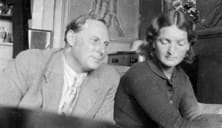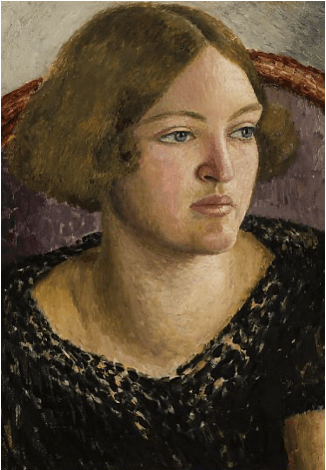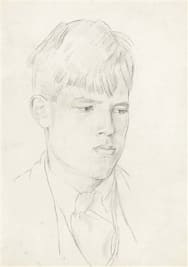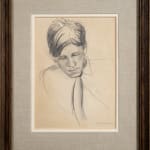Catherine Carrington (1904 - 2004)
Portrait of David John
Signed and dated lower right: Alexander 1923
Pencil on paper
31 x 22.5 cm. (12 ¼ x 8 ¾ in.)
Provenance:
Colin Clark, London, until 2020.
Portrait of David John
Signed and dated lower right: Alexander 1923
Pencil on paper
31 x 22.5 cm. (12 ¼ x 8 ¾ in.)
Provenance:
Colin Clark, London, until 2020.
Exhibited:
London, New Grafton Gallery, English Drawing 1900-1940, 16th January – 6th February 1975.
Last seen publicly in 1975 when exhibited at the New Grafton Gallery, this sensitive portrait of David John is a rare example of the graphic work of Catherine Carrington, wife of Noel Carrington and sister-in-law, and close confident, of the Bloomsbury group painter Dora Carrington. Catherine was born in 1904 in rural England and educated primarily by her father – a schoolmaster and later craftsman – before winning a place at the Slade School of Art, which Dora herself had attended in 1910. In 1925 she married Noel, a well-known author, editor and publisher, and lived with him in Hampstead for the next twenty years, before moving to Long Acre farm in Berkshire after World War II. They had three children, one of whom was the artist Joanna Carrington.

Fig. 1, Ralph Partridge and Catherine Carrington at Ham Spray House,
early 1930s
Through Dora, Catherine and Noel were members of the Bloomsbury Group, a collective of closely-knit artists, writers and intellectuals. Often working and living together in complicated relationships, they embraced a Bohemian lifestyle and railed against bourgeoise conventions. Members included Vanessa Bell, Lytton Strachey, Duncan Grant, Virginia Woolf, John Maynard Keynes and, of course, Dora Carrington. Dora and Lytton Strachey, inseparable, set up a home together in 1917 but never married and indulged in numerous affairs over the years, with Dora marrying Ralph Partridge, an Oxford friend of her brother Noel, in 1921. While Ralph fell in love with Dora, Lytton fell in love with Ralph, and the three set up a complex ménage-à-trois relationship from 1924 onwards at Ham Spray House, in Wiltshire. There are numerous photographs of Catherine Carrington at Ham Spray House from the early 1930s (fig. 1), testament to her close relationship with Ralph, Lytton and Dora, who painted her in the mid 1920s (fig. 2). The sisters-in-law often corresponded, and confided, with each other by letter, until Dora’s death by suicide in 1932, unable to live without Lytton who had passed away a few months earlier.

Fig. 3, Dora Carrington, Portrait of Catherine Carrington,
oil on canvas, 40.5 x 30.5 cm, Chatsworth House, Devonshire Collection
The New Grafton Gallery exhibition label on the reverse identifies Carrington’s sitter as David John, son of the painter Augustus John, and there is no reason to doubt this. Born in 1902, David would have been 21 in 1923, which accords with the age of the sitter, and furthermore there are close physiognomic similarities to other known portraits of David around this time (fig. 3). Though not part of the Bloomsbury Group, Augustus John knew many of its members well, including Dora Carrington, who visited John’s home at Fryen Court. For the Bloomsbury artists, John was the Bohemian artist par excellence and was therefore a figure of respect and emulation, at least in the Group’s earlier days.

Fig. 3, Henry Lamb, Portrait of David John,
pencil on paper, 32.5 x 23 cm, Private Collection
David was John’s eldest son with his wife Ida Nettleslip, with whom he had a further four boys. In 1903 John met Dorelia MacNeil, who would become his lifelong muse, and a ménage-à-trois was formed with Ida, until her untimely death in 1907. Dorelia went on to have a further two sons and two daughters with John. Growing up in a secluded farmhouse on the edge of the New Forest, with eight siblings, parents who came and went as they pleased, and a whole range of visitors who stayed weeks at a time, it was certainly an unconventional upbringing for David. John could be moody, detached and severe with the boys, all of whom were talented but ‘in the shadow of the Great Man, they dwindled’.[1] David, who played the oboe for several major orchestras, eventually gave up music and was appointed a postman, turning in retirement to occasional furniture removals. Two years older than Catherine Carrington, the two would certainly have known each other reasonably well through their respective families.



